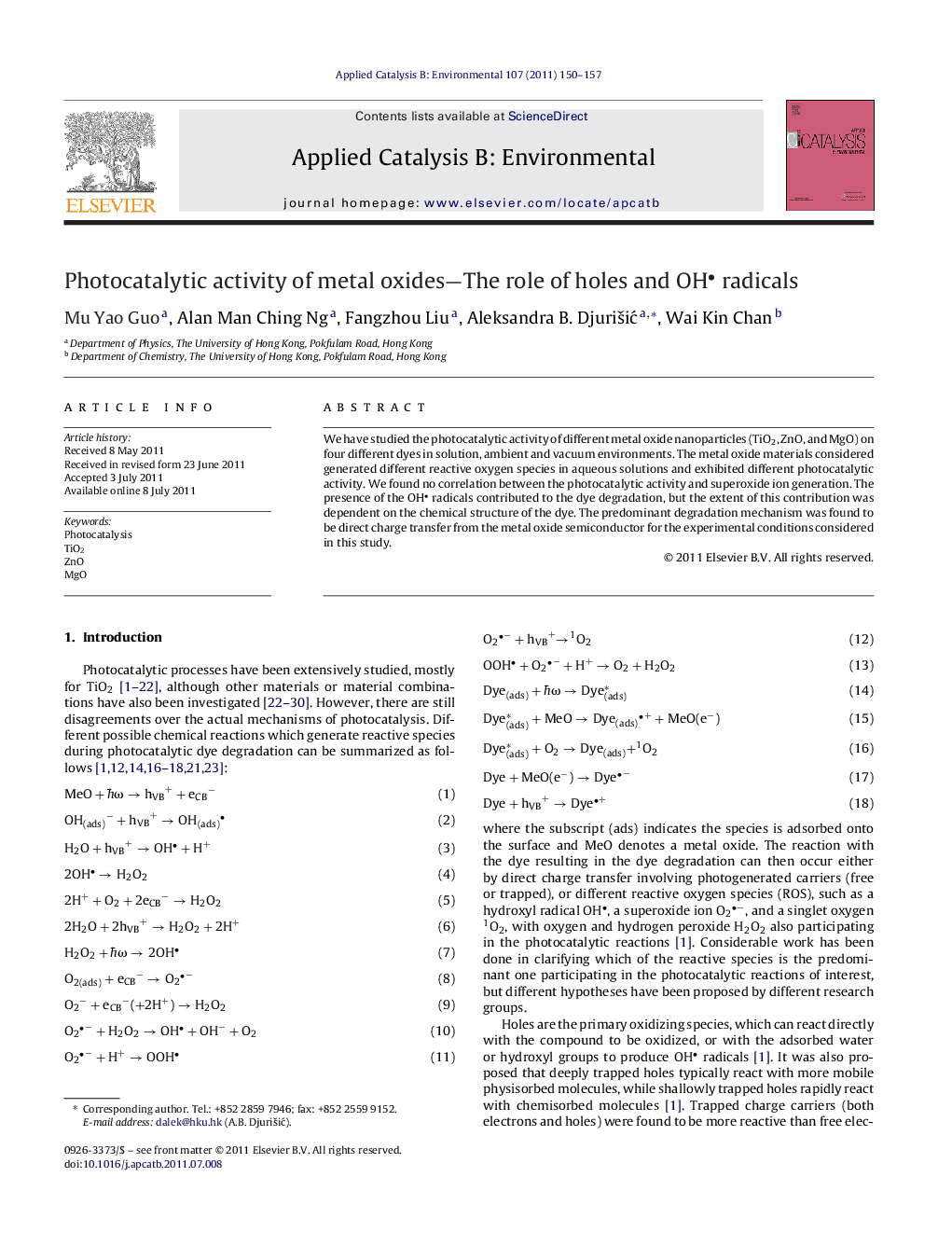| Article ID | Journal | Published Year | Pages | File Type |
|---|---|---|---|---|
| 46733 | Applied Catalysis B: Environmental | 2011 | 8 Pages |
We have studied the photocatalytic activity of different metal oxide nanoparticles (TiO2, ZnO, and MgO) on four different dyes in solution, ambient and vacuum environments. The metal oxide materials considered generated different reactive oxygen species in aqueous solutions and exhibited different photocatalytic activity. We found no correlation between the photocatalytic activity and superoxide ion generation. The presence of the OH radicals contributed to the dye degradation, but the extent of this contribution was dependent on the chemical structure of the dye. The predominant degradation mechanism was found to be direct charge transfer from the metal oxide semiconductor for the experimental conditions considered in this study.
Graphical abstractFigure optionsDownload full-size imageDownload as PowerPoint slideHighlights► Dominant mechanism of photocatalytic dye degradation is the direct charge transfer. ► OH radicals play a minor role in photocatalytic dye degradation on metal oxides. ► No correlation exists between BET surface area, ROS generation and dye degradation.
